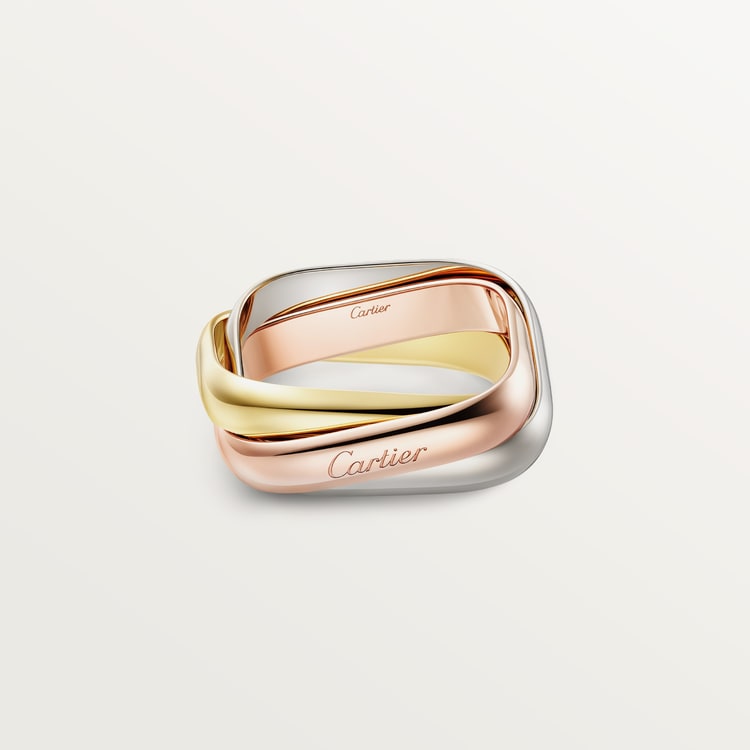Since its inception, the Cartier Trinity ring has teetered on the edge of jewelry and sculpture, positioning itself as the accessory of choice for male and female celebrities alike.
Balanced proportions and clean lines embody a design vision that only a Cartier jeweler can achieve.
The French poet and filmmaker Jean Cocteau always wore two Cartier Trinity rings stacked on his left pinkie.
Even after his death in 1963, Cocteau’s name was so closely linked with the ring, made of three interlocking bands in yellow, white and rose gold, that he was often credited with designing or commissioning the piece.
But it was Louis Cartier, a grandson of the house’s founder, who conceived the ring in 1924.
“It’s part of the myth and stories around Trinity,” said Marie-Laure Cérède, Cartier’s director of watchmaking and jewelry design.
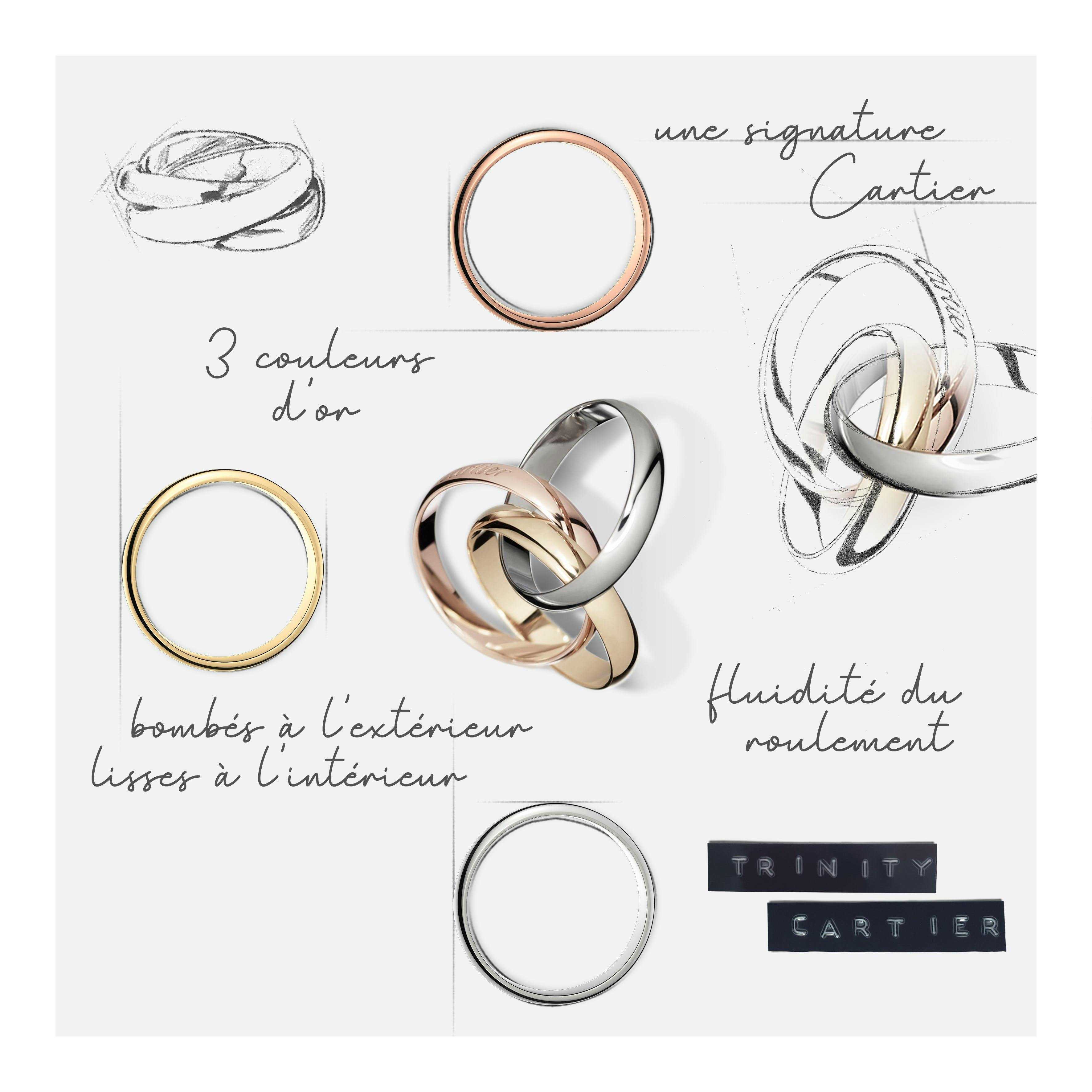
Silver screen icons like Grace Kelly, Alain Delon, Romy Schneider, and Gary Cooper found this timeless object essential as it evoked an extension of their style.
The ring's success is due not only to its impeccable design, but also to its powerful symbolism.
The meaning of this interconnected ring awaits endless interpretations, from a gesture of familial affection to be inherited by generations to a symbol of unending friendship or the profession of eternal love.
It's easy to become attached to an object in which those poetic memories of life are imbued. Almost a century after its magnificent creation, its charm continues to hold strong.
The Art Deco movement that had begun in France in the mid-1910s had inspired innovative designs made with eclectic mixes of materials.
And the same year as its design, André Breton wrote the Surrealist manifesto, sparking even more experimentation. Yet Trinity still stood out as a daring design.
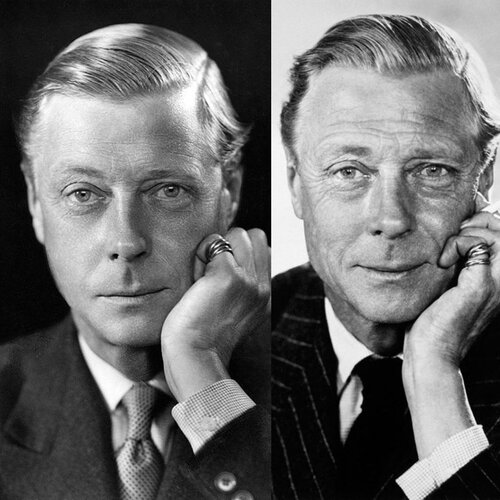
1924
Almost 80 years after the company was established, Louis Cartier, the son of the namesake founder, designed an intertwined ring for French poet and playwright Jean Cocteau.
The piece included three bands in yellow gold, rose gold, and white gold. This revolutionary creation would become a distinctive code of the Cartier style.
Trinity debuted at the 1925 Paris Exposition, when Cartier displayed the ring and bracelet alongside other more colorful, opulent jewelry.
That year they were photographed by Edward Steichen for American Vogue and worn by the American interior designer and tastemaker Elsie de Wolfe.
The design quickly gained a cult following with everyone from the Surrealist visionary Cocteau to the Duke of Windsor, who also wore two rings stacked on his pinkie.
And in the decades that followed, it became a signature choice of everyone from Cary Grant and Grace Kelly to Nicole Kidman, Kylie Jenner and Catherine, Princess of Wales.
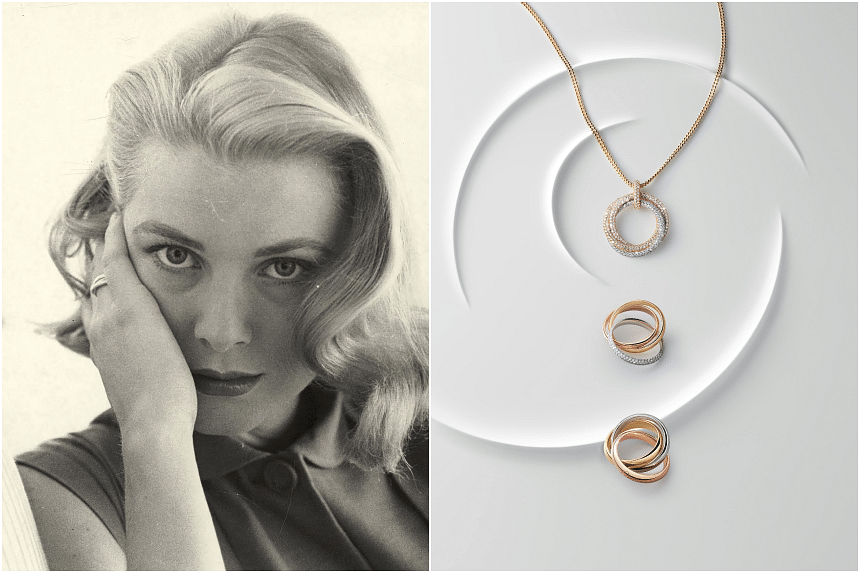
1930-1960
When Old Hollywood icons like Grace Kelly and Gary Cooper were spotted in the style, it gave the ring a tangible connection with regality and star power in the public eye.
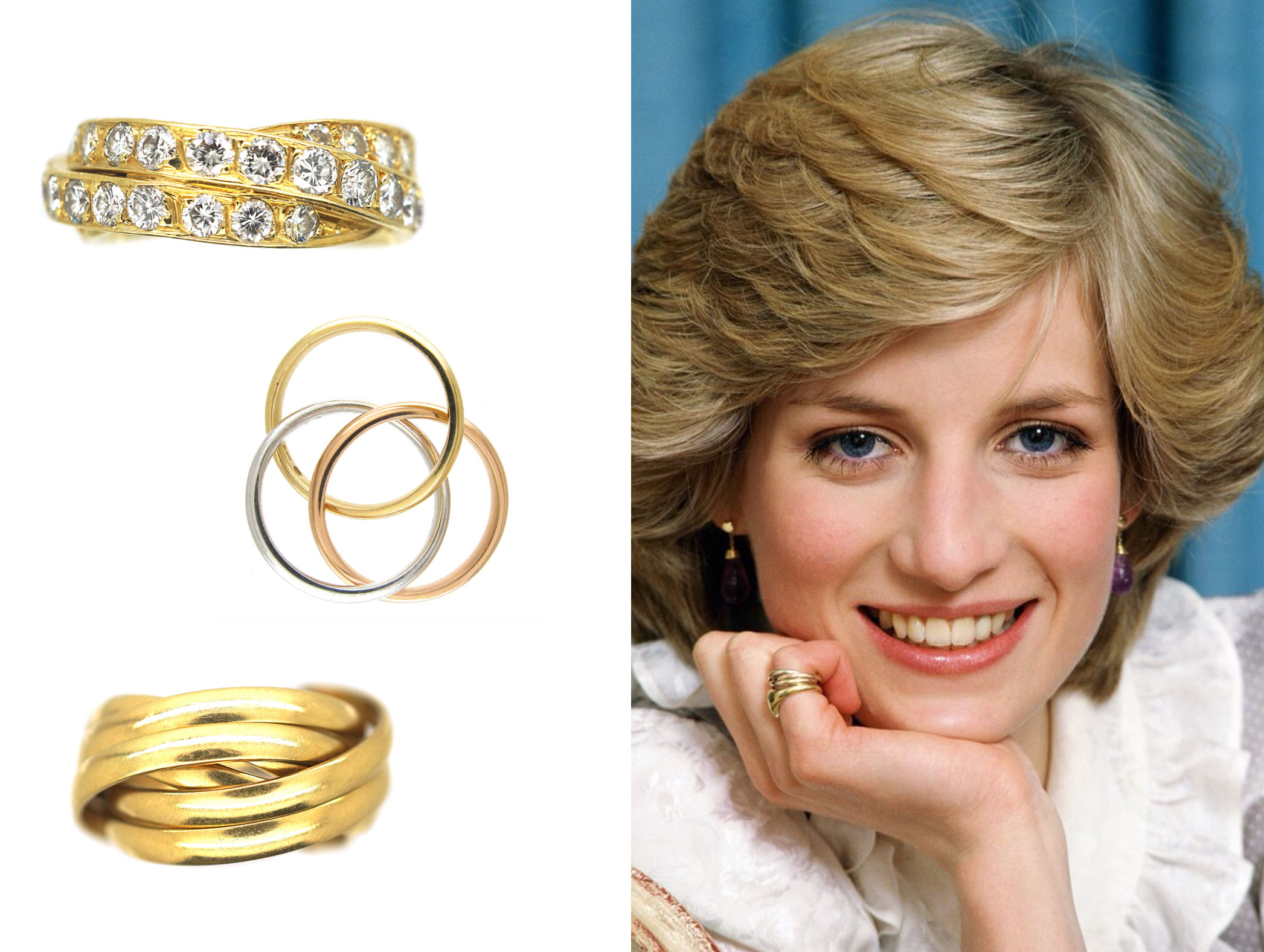
1981
After a decade of changes, the three-band ring officially adopted the name "Trinity."
The jewelry house created a version of the ring for the "les must de Cartier" line, which engraved the rose gold band with that very slogan.
Eventually, the slogan was phased out by the brand, and later models of the ring did not include the engraving.
1990s
In some cases, jewels were incorporated into the design, while sometimes, the shape and/or style shifted to match the current trends. In the 1990s, the ring was made bigger, to match the style of chunky jewelry popular at the time.
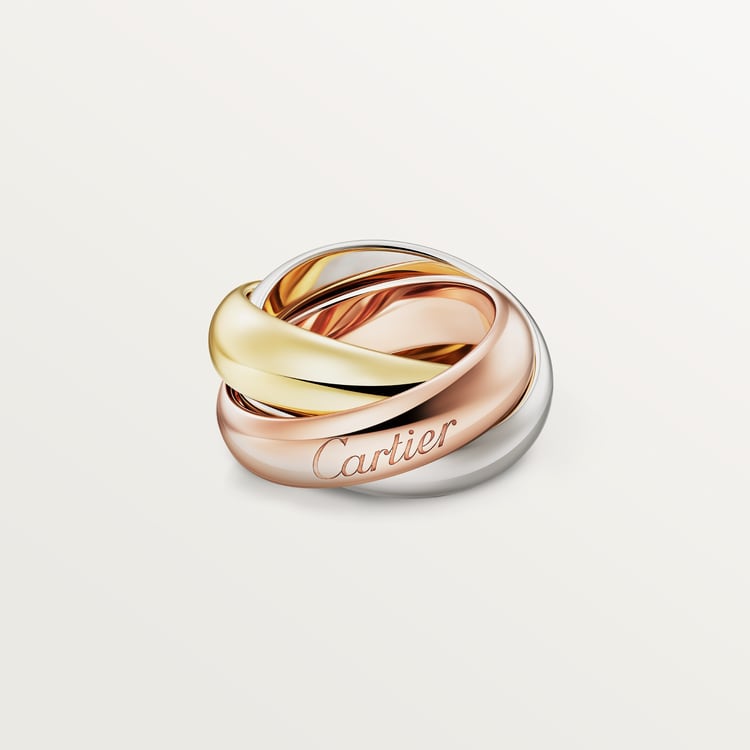
2014
The piece was inspired by the marital convenant of two souls joining together as one, making it the first ring baring the Trinity name to feature only one band.
It was avant-garde at the time,” Ms. Cérède said, “and it was unusual to mix three colors of gold in one design.”
For its centenary, Ms. Cérède was charged with creating new Trinity pieces while maintaining its trademark of interlocking links in three shades of gold.
The idea of redesigning it, she said, “seemed like an impossible feat.”
Trinity seems especially relevant today as more people want genderless, streamlined jewelry that can be worn with everyday clothes, but also has a touch of sophistication in its symbolism.
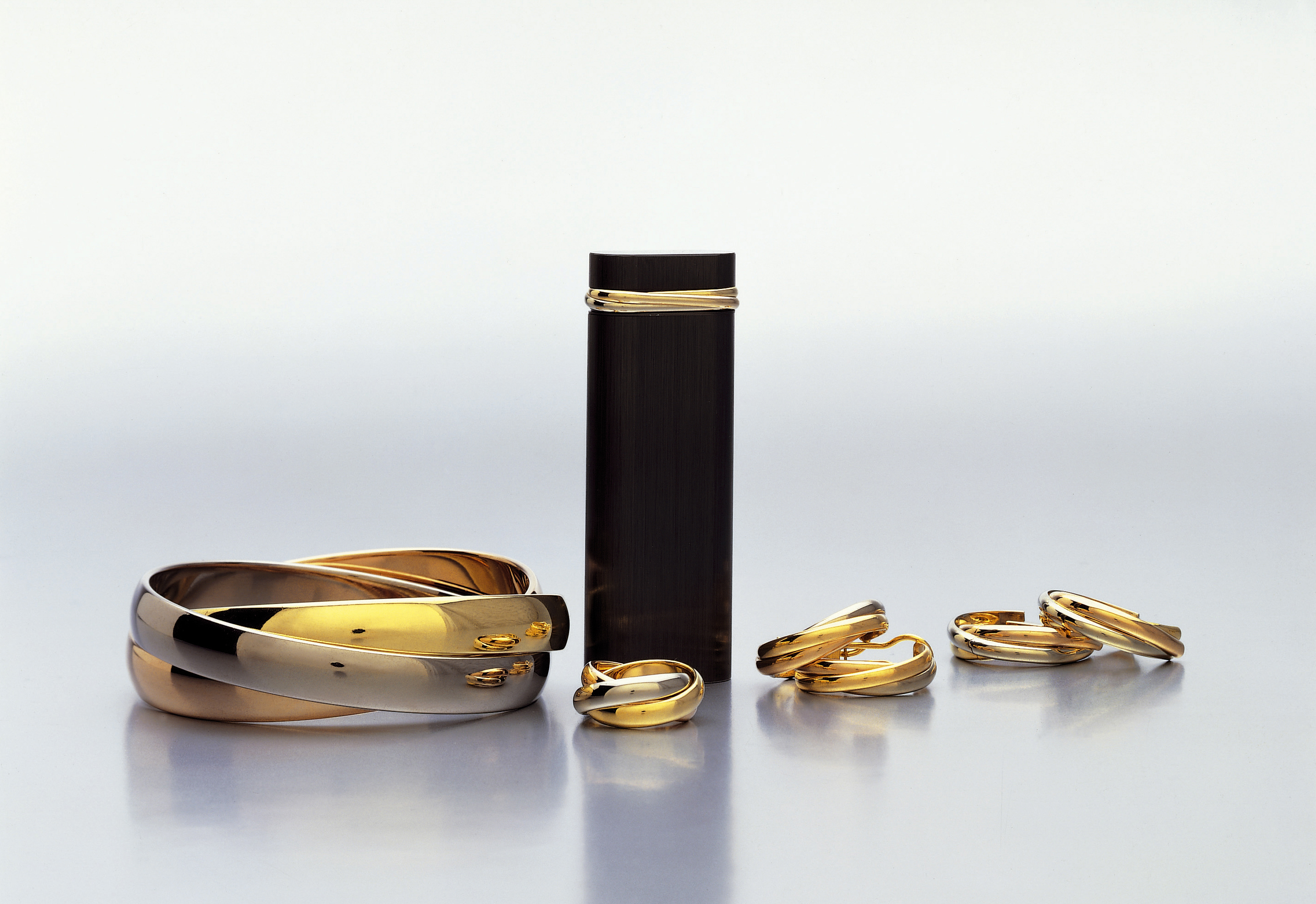
What gives a design like Trinity lasting power? “It has to be beautiful; not trendy, and it has to have meaning,” Ms. Cérède said.
Trinity seems to meet that description in several ways. In Christian doctrine, the name itself is used to refer to the Father, the Son and the Holy Spirit as three manifestations of one God.
Some say the band of rose gold is for love, white for friendship and yellow for loyalty, while others consider the three golds to be emblems of diversity and universality.
For Jackson Simmonds, a stylist at the New York City salon Julien Farel, his Trinity ring represents the past, present and future.
After he lost nearly everything in an apartment fire in late 2022, a friend accompanied him to Cartier’s Manhattan store and bought the ring for him to wear as a symbol of rising, like a phoenix, from the ashes.
